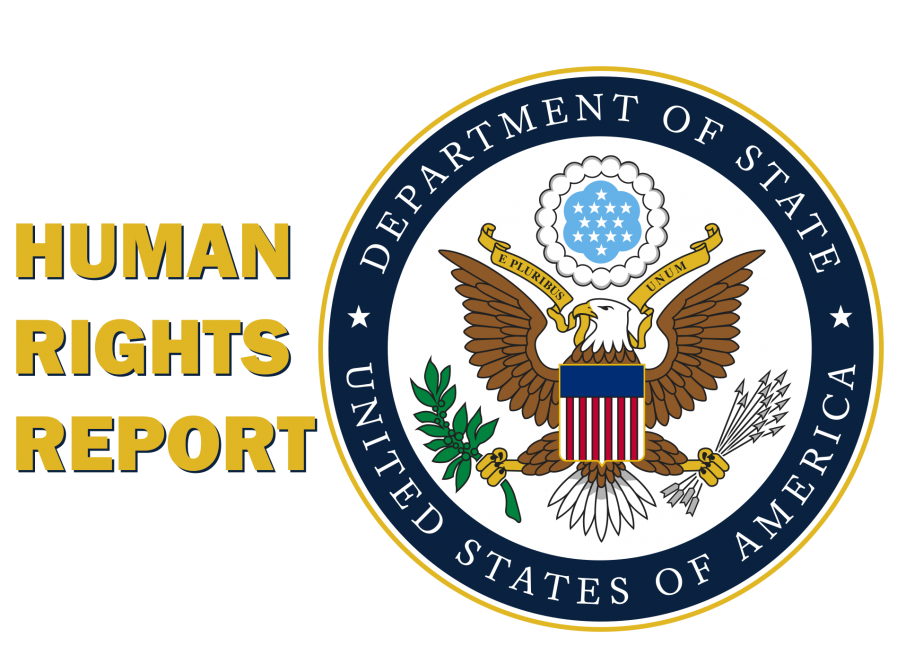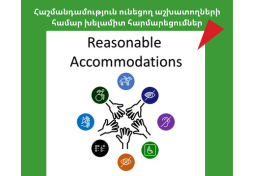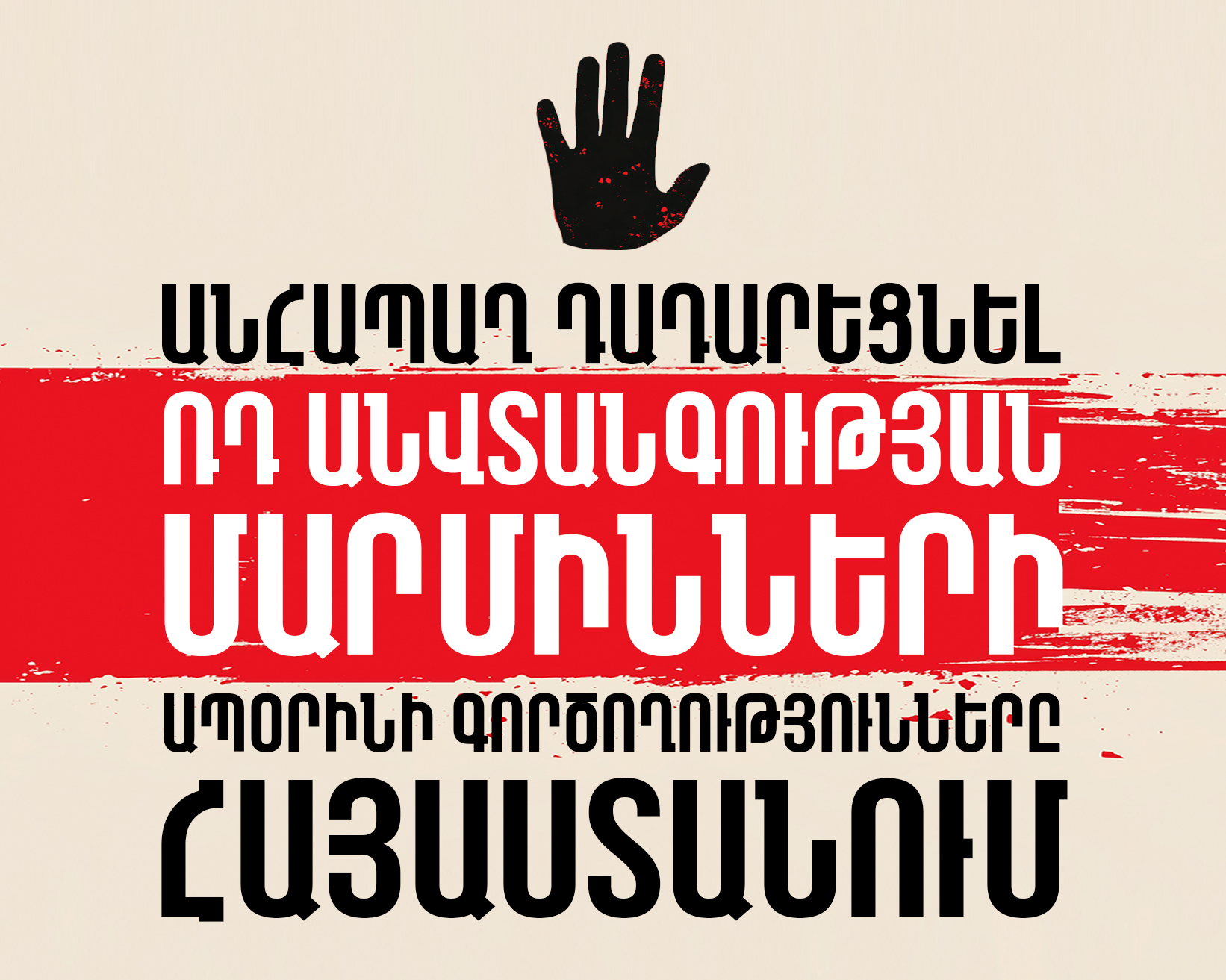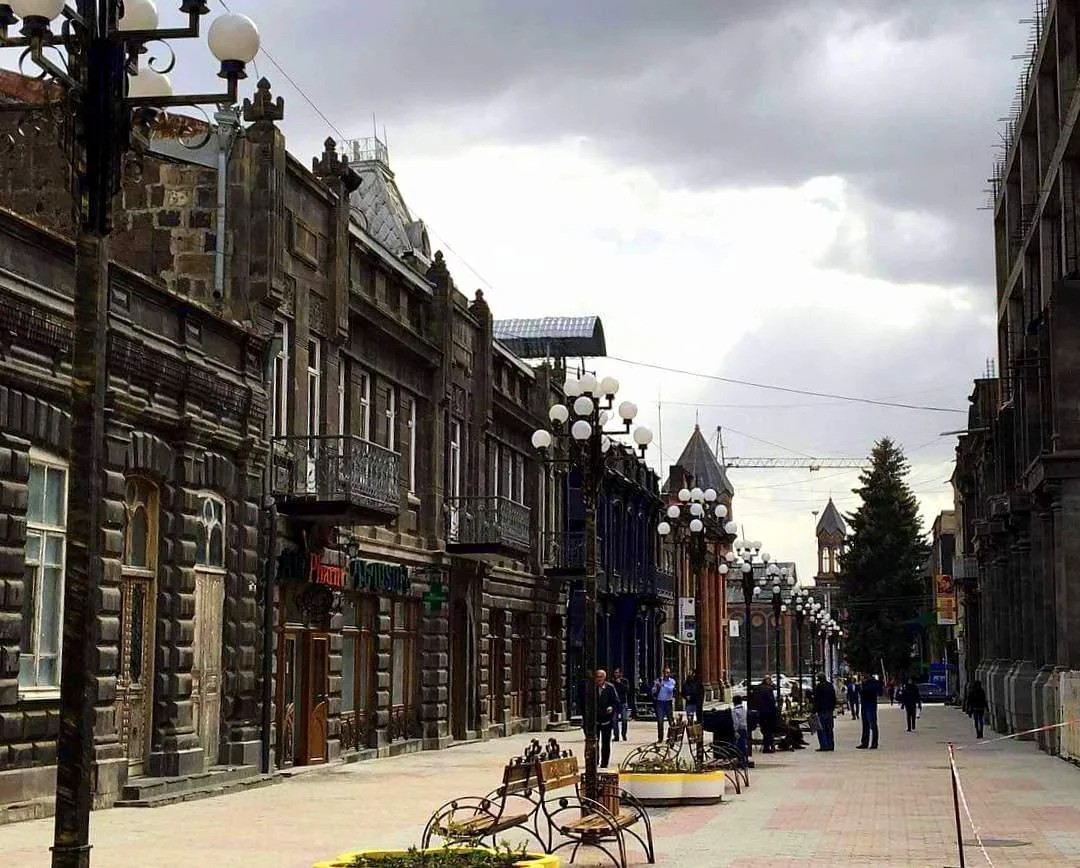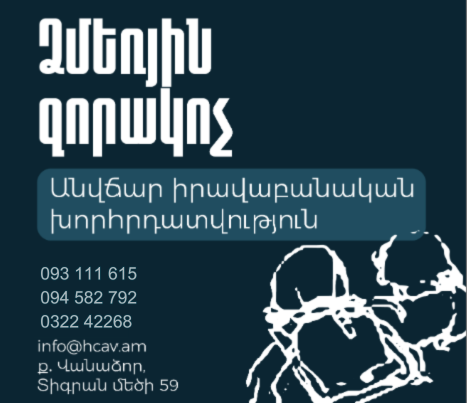A. ARBITRARY DEPRIVATION OF LIFE AND OTHER UNLAWFUL OR POLITICALLY MOTIVATED KILLINGS
There were no reports that the government or its agents committed arbitrary or unlawful killings, including extrajudicial killings, during the year.
Human rights nongovernmental organizations (NGOs) expressed concerns regarding noncombat deaths in the army and the failure of law enforcement bodies to conduct credible investigations into those deaths. According to civil society organizations and victims’ families, the practice of qualifying many noncombat deaths as suicides at the onset of investigations made it less likely abuses would be uncovered and investigated. According to human rights lawyers, the biggest obstacle to investigation of military deaths was the destruction or nonpreservation of key evidence, both by the military command (in cases of internal investigations) and by the specific investigation body working on a case. According to human rights NGOs, the government’s lack of transparency in reporting on military deaths, whether classified as combat or noncombat, led to public distrust of official information in this sphere.
Law enforcement and prosecutors took no specific action on the findings of a working group established by the prime minister in 2020 that examined five noncombat deaths from past years before its dissolution in 2022. According to official information, however, investigators listed two persons under one of the cases as wanted. On February 17, a human rights lawyer who served on the working group and families of the deceased published a list of dozens of sitting and former justice-sector officials whom they believed were complicit in covering up the deaths. On April 25, the European Court of Human Rights (ECHR) ordered the government to pay €50,000 ($54,100) in damages to the mother of Tigran Ohanjanyan (one of the five cases investigated), finding that the investigation carried out by authorities was seriously deficient and that the ECHR could not consider the conclusions of that investigation to be reliable or the explanation for Ohanjanyan’s 2007 death to be convincing and satisfactory.
Two cases involved individuals allegedly jumping to their deaths from windows while in the custody of the Investigative Committee: one on April 27 in the Regional Investigative Department of Ararat Region, Masis Division, and the other on July 20 in the building of the General Department of Investigation of Smuggling and Economic Crimes of the Investigative Committee. The family of Misak Poghosyan, the first victim, noted numerous suspicious circumstances regarding the death, including the high level of the window seal, the close proximity of escorting police officers who could have intervened to prevent an alleged suicide, and the fact that the scene of the fall was cleaned almost immediately and not sealed off. There was little information concerning the second case, in which the victim was a foreign citizen. According to official information, both cases remained under investigation, the first by the National Security Service on charges of official negligence and escape from custody, the second by the Anti-Corruption Committee on charges of inducing suicide and official negligence.
There was no progress in accountability for the post-2008 presidential election deaths of eight civilian protesters and two police officers.
B. DISAPPEARANCE
There were no reports of disappearances by or on behalf of government authorities.
The International Committee of the Red Cross (ICRC) processed cases of persons missing in connection with the conflict with Azerbaijan and worked with the government to develop a consolidated list of missing persons. According to the ICRC, 4,931 Armenians and Azerbaijanis remained unaccounted for since the 1990s due to the conflict, of whom a total of 761 were Armenians. According to the government, by year’s end, 195 persons (including 20 civilians) were considered missing after the fall 2020 fighting and two more military service members were considered missing after the September 2022 hostilities. There were 42 missing Armenians following the September 19 offensive on Nagorno-Karabakh (including 12 civilians).
C. TORTURE AND OTHER CRUEL, INHUMAN, OR DEGRADING TREATMENT OR PUNISHMENT, AND OTHER RELATED ABUSES
The constitution and law prohibited such practices. Nevertheless, the local NGO community expressed collective concern regarding a notable increase in reports that members of the security forces tortured or otherwise abused individuals in their custody with impunity. According to human rights lawyers, while the criminal code defined and criminalized torture, it did not criminalize other cruel, inhuman, or degrading treatment. Officials often investigated instances of torture under charges of abuse of power, leading to lighter punishments.
Since July 2022, the Investigative Committee was responsible for investigating most torture cases, but according to human rights lawyers, committee investigators lacked experience in such cases. While the National Security Service was in charge of investigating allegations of torture committed by the Investigative Committee, human rights lawyers found these investigations lacked the independence, transparency, and public oversight required for credible inquiries.
Human rights activists asserted impunity for old and new instances of law enforcement abuse continued to contribute to the persistence of the problem, with alleged perpetrators continuing to serve in their positions or being promoted. On July 12, the National Assembly adopted changes to the criminal code allowing for the release of a perpetrator from criminal responsibility due to “active remorse” in cases of grave and especially grave crimes, an approach previously limited to light- and medium-gravity crimes. In August, the president signed the bill into law despite the protest of civil society representatives, who stated it contradicted the country’s constitution and international human rights commitments and would exacerbate official impunity, violate the rights of victims, and serve as a political tool if applied selectively.
The local NGO community noted an increased number of reports of abuse by police, including in police stations, which, unlike prisons and police detention facilities, were not subject to public monitoring. On July 3, more than 30 NGOs issued a statement noting “unprecedented violence and instances of torture in police departments and other law enforcement agencies” in recent months, characterizing the violence as becoming systemic and revealing what they viewed as ineffective police and judicial reforms. The organizations noted that violence against attorneys was unprecedented and that additional cases indicated a growing trend of police impunity. They stated the government’s failure to promptly investigate reports and bring perpetrators to justice resulted in impunity and decreased public trust in the law enforcement system. According to the July 25 report by the Helsinki Citizens Assembly Vanadzor on monitoring of police reform, there were 199 reports of human rights violation by police during 2022, a 20 percent increase compared with 2021 and 54 percent increase compared with 2019.
Criminal justice bodies continued to rely on confessions and information obtained during questioning to secure convictions. According to human rights lawyers, procedural safeguards against mistreatment during police questioning, such as inadmissibility of evidence obtained through force or procedural violations, were insufficient, as was a video surveillance system that was installed in only a few police stations and had not yet been used in police mistreatment cases. According to human rights lawyers, while many cases occurred in Yerevan, the situation in regional police stations was worse.
Reports of police abuse included drug raids on nightclubs in which clients, including women and lesbian, gay, bisexual, transexual, queer, or intersex (LGBTQI+) persons, were beaten and harassed; two cases in which attorneys were beaten while representing their clients; disproportionate use of force during public events; physical abuse by an off-duty senior police officer toward a minor; and reports of beatings at local police stations.
For example, on February 10, police beat defense attorneys Marzpet Avagyan and Emanuel Ananyan, who were providing legal aid to arrested children at the Erebuni Police Department. One officer reportedly attacked the attorneys after their minor clients accused the officer of using excessive force during their arrest. The Investigative Committee launched a criminal case for violence against the attorneys. The police officers claimed the attorneys were disrespectful and used offensive language, disrupting the investigation. On August 15, the prosecutor’s office confirmed the officers used physical violence against the attorneys and initiated a criminal prosecution against them on charges of physical infliction. On October 9, the criminal case against the Department of Ministry of Internal Affairs, the operational deputy head of Yerevan’s Erebuni Police Department, the senior operative, and an operative of the same department was sent to the court.
The trial of three police officers from Yerevan’s Nor Nork District on charges of torture for the 2020 abuse of weightlifting champion Armen Ghazaryan and another citizen continued at year’s end. When the judge was promoted and replaced with a new one, however, the trial restarted on April 10, despite having been close to completion. All three defendants returned to their jobs after release on bail.
Reports of degrading treatment in the army continued.
Prison and Detention Center Conditions
Several reports raised human rights concerns related to prison and detention conditions, including physical conditions, access to health care and psychological support, treatment of LGBTQI+ persons, and predation by hierarchical criminal/organized crime structures.
Abusive Physical Conditions: There were reports of degrading conditions at prison facilities, despite government efforts to implement renovations. According to the Prison Monitoring Group (PMG), a coalition of local NGOs, cell conditions in the Abovyan prison were insufficient, despite upgrades to the water supply, bathrooms, and cells. The PMG cited a continued lack of basic living facilities for women, excessive humidity, and no access to hot water. Among the men’s facilities, the PMG noted conditions in the Nubarashen correctional facility were “worrying,” and the Armavir correctional facility, although equipped with a ventilation system, was excessively humid in some cells.
According to human rights lawyers, the excessive use of pretrial detention led to overcrowding in some prisons, although the government began using house arrest in limited instances as a means to address this problem.
Although the government prosecuted those implicated in the organized hierarchical criminal subculture dominating prison life, in which select inmates (called “watchers”) at the top of the informal prison hierarchy controlled the inmate population, the problem remained. On June 21, media reported the suicide of an inmate at Armavir penitentiary. According to prison monitors, his suicide was attributed to the hierarchical criminal subculture within the facility. This subculture deemed certain crimes, such as matricide, for which the inmate was convicted, as “unacceptable.” Allegedly, the prison administration faced obstacles in assigning the inmate to a specific section within the prison due to resistance from other inmates. Subsequently, he was kept in solitary confinement for more than two months, reportedly at his request, after which he committed suicide by hanging.
The PMG reported a lack of accountability from the Investigative Committee in charge of investigating prison deaths and a lack of information on the outcomes of its investigations.
According to the PMG, although the government installed self-harm and suicide prevention evaluation procedures in 2022, self-harm cases continued to be a major concern, as was access to medical and psychological services.
The Office of the Ombudsperson continued to raise the systemic problem of unacceptable conditions of courtroom detention facilities throughout the country. On July 21, following monitoring visits to four regional courthouses, the ombudsperson reported a lack of basic facilities in all four regions, such as insufficient windows, toilets, and heating in Hrazdan, as well as the lack of accessibility, privacy, and basic sanitary supplies for toilets in Yeghvard, Charentsavan, and Ashtarak.
According to the PMG and other human rights organizations, LGBTQI+ individuals experienced discrimination and abuse in prison settings. During a visit to the Armavir prison on July 11, observers witnessed an obvious discriminatory attitude towards a transgender woman by prison officials, who used insulting expressions towards her. The PMG noted that prison administrations segregated homosexual men, those assumed to be homosexual, those associating with homosexual men, and inmates convicted of crimes such as rape or the killing of a parent, as well as those who refused to live by “unwritten prison rules,” from other inmates. The hierarchical criminal subculture forced those persons to perform humiliating tasks such as cleaning toilets, picking up trash for other prisoners, and providing sexual services. Food and cutlery for these inmates were kept separate, and they had separate laundry machines and separate solitary confinement cells.
Administration: According to the PMG and other observers, authorities did not conduct prompt investigations into credible allegations of mistreatment.
Independent Monitoring: The government permitted domestic and international human rights groups, including the European Committee for the Prevention of Torture (CPT), to monitor prison and detention center conditions, and they did so regularly.
Improvements: According to the government, during the first 10 months of the year the penitentiary service repaired drainage and water supply systems in several facilities, including Nubarashen Correctional Facility; repaired roofs on several facilities, including Nubarashen Correctional Facility; and did a variety of other repairs, including emergency restoration works in bathrooms, renovation of cells and rooms, and repair of boiler houses and water heaters.
D. ARBITRARY ARREST OR DETENTION
The constitution and law prohibited arbitrary arrest and detention and provided for the right of any person to challenge the lawfulness of their arrest or detention in court. There were several reports of arbitrary or selective arrest.
Arrest Procedures and Treatment of Detainees
According to the criminal procedural code, an investigative body was required to present individuals with a decision on their arrest or release and a list of their rights and duties within six hours of the moment that person was deprived of their freedom. The arrest could not last longer than 72 hours. Within 60 hours, the investigative body had to file charges and obtain a detention warrant from a judge. If the arrested person was not detained by court decision within 72 hours from the moment of arrest, they were subject to immediate release. When considering the issue of detention, the court was also required to check the legality of the arrest.
The law required police to inform detainees of the reasons for their arrest as well as their rights to remain silent, to have legal representation, and to inform a person of their choosing regarding their location. Bail was a legal option.
According to human rights lawyers, the frequent use of pretrial detention forced suspects to bear the burden of proof to demonstrate they did not present a flight risk or would not hamper an investigation. Lawyers said court detention decisions were unpredictable, with different restrictions placed on defendants in similar circumstances.
According to prison monitors and human rights lawyers, excessive and in their view often unjustified pretrial detention was applied, despite government efforts to increase the use of alternatives to detention as part of the government’s penal reform.
According to official statistics, in 2022, only 25 percent of bail requests were granted, while courts granted 70 percent of government detention requests.
Defendants were entitled to representation by an attorney from the moment of arrest, and the law provided for a public defender in criminal and civil cases if the accused was indigent. According to human rights observers, more detainees were aware of their right to legal representation than in the past, especially in the capital. Observers indicated police at times avoided granting individuals their due process rights by summoning and holding, rather than formally arresting them under the pretext they were material witnesses, not suspects. Police were thereby able to question individuals without giving them the benefit of a defense attorney. This practice was particularly evident outside the capital.
In its 2021 report, the CPT suggested that the practice of “informal talks” (i.e., persons being “invited,” usually by telephone, to come to police, prior to being officially declared a suspect and detained), criticized by the CPT many times in the past, was not fully eliminated, especially outside the capital.
Arbitrary Arrest: Human rights observers stated the detentions of patrons of a nightclub during two police raids allegedly seeking illicit drugs amounted to arbitrary arrests. In several cases, human rights observers deemed unnecessary the arrests and pretrial detention motions requested by the investigation body and the prosecutor’s office and satisfied by courts. For example, in October 2022, a trial court approved detention for former judge Arusyak Aleksanyan, who was charged with passing a patently unjust verdict and exceeding official authority. According to human rights observers, her pretrial detention, which continued during the year, was unjustified. According to the PMG, the former judge was kept in the only women’s penitentiary, with inmates whom she had convicted, creating a potentially dangerous situation.
E. DENIAL OF FAIR PUBLIC TRIAL
Although the law provided for an independent judiciary, the judiciary was not viewed as independent or impartial due to its history of corruption and political influence, resistance to reform, and high-profile scandals. There were unconfirmed reports of attempts by the government and elements of the former regime to influence judges. The high case load, lack of public trust, and allegations of government pressure discouraged professionals from applying to judgeships.
In a March 23 report titled Supporting Judicial Reforms in Armenia, the World Bank stated that despite progress, shortcomings persisted in the justice sector, such as independence, efficiency, and quality. The legal framework needed enhancement to align with European standards. Key institutions, including the Supreme Judicial Council (SJC), a constitutional body responsible for protecting the independence of courts and judges, were not providing the judiciary with sufficient budgetary, human resources, and technology support. While the courts lacked funds, they faced high demand and were falling behind in resolving cases, affecting timely justice. Comprehensive planning in budgeting, human resources, and asset management was also lacking.
There were continued media reports of selective application of disciplinary proceedings against “unfavorable” judges, and reports of lack of transparency in the Ministry of Justice’s decision-making process on whether to submit cases to the SJC for disciplinary proceedings. There was similar lack of transparency and no public oversight over the decisions of the Ethics and Disciplinary Commission of the General Assembly of Judges, a self-governance body of judges. Human rights lawyers reported cooperation between the Ministry of Justice and SJC on disciplinary proceedings, further undermining the independence of the judiciary from the executive branch.
On January 30, the SJC appointed judge Mnatsakan Martirosyan, whom independent experts had publicly accused of rendering politically motivated rulings, chairman of the Criminal Court of First Instance (supervising 60 judges).
On June 2, the European Association of Judges expressed “considerable concern” regarding the SJC’s misuse of disciplinary proceedings against judges as a means of deterring them from publicly expressing their views on the operation of the judicial system. The association also noted with concern the justice minister’s power to institute disciplinary proceedings against judges presented “a danger for the independence of judicial office holders.”
On July 2, the Protection of Rights Without Borders NGO reported on the practice of disciplinary liability against judges, based on a review of proceedings held in 2022. The findings raised concerns regarding the initiation, justification, and outcomes of disciplinary actions against judges by the SJC. Specific problems included unclear or inconsistent justification for disciplinary action, penalties that lacked clear criteria or proportionality, and delays in proceedings that led to dropped cases and poor accountability.
Civil society organizations continued to note the need for a comprehensive vetting process for judges. The law focused only on integrity checks for judge candidates and those seeking promotion, not sitting judges. Asset checks of sitting judges were limited. The Corruption Prevention Commission’s integrity evaluations for judicial candidates were not public and the SJC reportedly often ignored assessments when appointing judges, even in cases of political bias or unexplained wealth.
Human rights lawyers noted some judges faced internal pressure from superiors, including the SJC, on some judicial decisions, as well as the threat of disciplinary action. Some judges used the severely overloaded dockets to pressure rival interest groups by taking medical leave and leaving their colleagues an insurmountable caseload. Human rights lawyers said court decisions on cases involving similar circumstances had become unpredictable and in some high-profile corruption cases decisions appeared to be politically motivated. They asserted judicial reforms primarily offered ad hoc and temporary fixes rather than systemic reform.
According to observers, in many cases in which judicial decisions appeared politically motivated, faulty evidentiary submissions by the prosecutor’s office had precluded judges from making different decisions. Observers also noted that while bribery of judges was no longer a problem, there were reports some defense attorneys extorted money from clients and claimed it was for bribing a judge, thus undermining trust in the system.
According to human rights observers, unless the defendants had persistent attorneys representing their rights, or journalists or trial monitors attending the trial, the judges declined to ignore evidence that defendants claimed was obtained under duress.
Trial Procedures
The constitution and laws provided for the right to a fair and public trial, but the judiciary did not enforce this right in some cases.
The law provided for presumption of innocence, but according to human rights observers, suspects sometimes did not enjoy this right. Public defenders were overburdened, and there was a lack of public defenders specialized in specific areas, such as trafficking in persons and domestic violence. A shortage of public defenders outside Yerevan sometimes led to denial of the right of defendants to an attorney of their choosing.
The law provided that defendants could confront witnesses, present evidence, and examine the government’s case in advance of a trial, but defendants and their attorneys had very little ability to challenge government witnesses or police, while courts tended to accept prosecution materials routinely. Judges were reluctant to challenge police experts, hampering a defendant’s ability to mount a credible defense. Judges’ control over witness lists and over the determination of the relevance of potential witnesses in criminal cases also impeded the defense. Defense attorneys complained that judges at times did not allow them to request the attendance at trial of defense witnesses. According to lawyers and domestic and international human rights observers, including the Council of Europe’s human rights commissioner, the prosecution retained a dominant position in the criminal justice system. Human rights organizations reported there were insufficient provisions for prosecutorial impartiality and accountability and no objective criteria for the nomination and selection of candidates for general prosecutor.
One of the judiciary’s most significant problems was the severe overload of judicial dockets at all levels due to a lack of judges. Other major factors contributing to the judicial caseload were a high level of appeals by defendants due to a lack of trust in the judiciary and prosecutors’ appeal of acquittals and lower sentences.
Political Prisoners and Detainees
There were no credible reports of political prisoners.
F. TRANSNATIONAL REPRESSION
Not applicable.
G. PROPERTY SEIZURE AND RESTITUTION
Not applicable.
H. ARBITRARY OR UNLAWFUL INTERFERENCE WITH PRIVACY, FAMILY, HOME, OR CORRESPONDENCE
The constitution and law prohibited such actions, but there were reports the government did not always respect these prohibitions.
Authorities could not legally tap telephones, intercept correspondence, or conduct searches without obtaining the permission of a judge based on compelling evidence of criminal activity. The constitution, however, stipulated exceptions when confidentiality of communication could be restricted without a court order to protect state security. Although law enforcement bodies generally adhered to legal procedures, observers claimed judges authorized wiretaps and other surveillance requests from the National Security Service and police without the compelling evidence required by law. Moreover, observers reported limited cases when law enforcement bodies tapped attorney communications in breach of client/attorney confidentiality.
There were indications Azerbaijan’s government may have engaged in politically motivated surveillance in Armenia (see the Country Report on Human Rights Practices for Azerbaijan). On May 25, in a report on the use of Pegasus spyware in the Azerbaijan-Armenia conflict, Access Now stated it was unaware of any technical evidence indicating the Armenian government had ever utilized Pegasus, but the government was believed to be a user of Cytrox’s Predator, another spyware product. In its report, it noted that in 2021, Meta identified targets of Cytrox’s spyware in the country.
I. CONFLICT-RELATED ABUSES
Sporadic incidents of fighting in the decades-long conflict between Armenia and Azerbaijan continued, resulting in civilian casualties. During the year Azerbaijani forces hit infrastructure inside Armenia, including the construction site of a metallurgical plant in Yeraskh village in Ararat region, seriously wounding two civilian workers.
On September 19-20, Azerbaijan conducted a military operation to gain full control over Nagorno-Karabakh. Since December 2022, Azerbaijan had closed the Lachin Corridor to most civilian and commercial traffic, allowing only intermittent humanitarian access until Azerbaijan reopened it September 24 for one-way traffic out of Nagorno-Karabakh. Between then and October 1, more than 100,000 Nagorno-Karabakh residents – virtually all of the region’s ethnic Armenians – fled to Armenia (also see the Country Report on Human Rights Practices for Azerbaijan).
Complaints submitted by Armenia and Azerbaijan to the ECHR accusing each other of committing atrocities during fighting in 2020 and 2016 awaited the court’s ruling, as did Armenia’s complaints following significant fighting in September 2022 along the international border and inside Armenia.
Killings: In a September report, citing a video, the International Partnership for Human Rights (IPHR) asserted that during the September 2022 fighting, there was a “reasonable basis to believe” that “Azerbaijani Armed Forces committed extrajudicial killings of Armenian soldiers.”
Following the flight of more than 100,000 ethnic Armenian Nagorno-Karabakh residents to Armenia in late September, Armenia’s Investigative Committee announced an investigation into alleged crimes committed by Azerbaijan against Nagorno-Karabakh residents.
Armenia did not make progress investigating alleged war crimes from the 2020 hostilities with Azerbaijan carried out by perpetrators speaking Armenian.
Physical Abuse, Punishment, and Torture: In IPHR’s September report on the September 2022 fighting, the organization – relying on videos and photos of soldiers’ corpses – stated there was a “reasonable basis to conclude” that Armenian soldiers were subject to cruel, inhuman, or degrading treatment and torture by Azerbaijani soldiers. Citing videos and photographs of the bodies of dead mutilated Armenian servicewomen, the IPHR highlighted “sexual and gendered characteristics” of such mutilation and concluded there was a “reasonable basis to believe that Armenian servicewomen were subjected to [cruel, inhuman, or degrading treatment] and torture while in the custody of Azerbaijani armed forces.”
There were no updates on the six criminal cases launched by Armenian authorities in 2020 to investigate actions of perpetrators speaking Armenian during the fall 2020 intensive fighting on charges of “serious violations of international humanitarian law during armed conflicts.” Of the six cases, four involved alleged murder, torture, and inhuman treatment; one involved alleged murder and torture; and one involved alleged murder. The government combined all six cases into one criminal proceeding in 2021. The investigation remained underway at year’s end.







